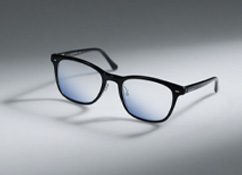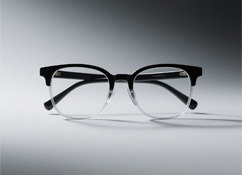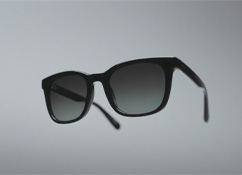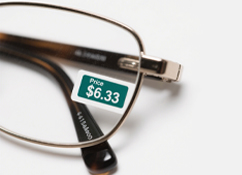If you or your child wears glasses, you’ve probably asked:
- Why do eyeglass prescriptions differ between exams at different hospitals or optical shops?
- Which prescription should I trust for my glasses?
- Why do doctors or optometrists sometimes disagree on the “right” power?
These questions are especially common for parents who get multiple exams for their kids—only to face conflicting results and no clear answer on which prescription to choose. Often, they default to a lower power “just to be safe”—but is that the right call? Let’s break down the science behind eyeglass prescriptions, why they vary, and how to ensure you’re getting the most accurate one possible.
First, let’s clear up a common confusion: refraction values (your eye’s actual optical power) and eyeglass prescriptions are not the same.
Refraction is objective—it’s a measurement of how well your eye focuses light, with a relatively consistent number if the exam is done correctly. A prescription, though, is subjective: It’s a personalized choice based on your refraction, age, eye alignment, daily needs, and even your previous glasses. Every optometrist or doctor uses their training and experience to balance these factors—which is why prescriptions can vary, even if refraction results are similar.
To get a reliable prescription, you first need an accurate refraction. Refraction measures your “refractive error”—conditions like myopia (nearsightedness), hyperopia (farsightedness), or astigmatism, where your eye can’t focus light properly on the retina. For myopia (the most common issue), this means parallel light rays focus in front of the retina instead of on it. For hyperopia, they focus behind it.
To get an accurate refraction, four non-negotiable elements must be in place:
Light from distant objects (like a street sign or mountain) is nearly parallel—which is what your eye needs to focus correctly. The gold standard for “distant” in eye exams is 16 feet (5 meters)—any closer, and the light isn’t parallel enough to give an accurate reading.
That’s why many exam rooms use mirrors: They reflect the eye chart to “extend” the room’s length to 16 feet. If your exam doesn’t meet this standard (e.g., the chart is too close), your refraction result will be off—meaning your prescription could be wrong.
Accommodation is your eye’s ability to focus on close objects—and it’s the biggest enemy of accurate refraction. If your eyes are straining (even unconsciously), your myopia values can spike or fluctuate, making it hard to get a clear reading.
To fix this:
- For most nearsighted people, looking at distant objects or using a “fogging” technique (temporarily blurring vision to relax the eyes) works.
- For farsighted people or kids (whose eyes are more prone to straining), cycloplegic dilation (eye drops that paralyze the focusing muscles) is essential. Dilation eliminates accommodation entirely, so your true refractive error shines through—no guesswork involved.

Accurate refraction means light focuses on your retina—which should give you your best corrected visual acuity (BCVA). BCVA is your “personal best” vision—not necessarily 20/20 (the U.S. standard for “normal”). Some people’s best is 20/15; others’ is 20/25. Using 20/20 as the only goal is a mistake—your prescription should match your best vision, not a textbook number.
Miscommunication can derail an exam faster than anything. If you say “double vision,” does that mean the chart looks blurry or split into two? If your child says “my eyes hurt,” do they mean strain or actual pain?
For young kids or people with intellectual disabilities (who can’t describe symptoms clearly), optometrists rely on experience to fill in the gaps. For everyone else: Be as specific as possible—your answers directly affect how accurate your refraction (and prescription) will be.
Once you have an accurate refraction, your optometrist uses four key factors to build your prescription—here’s how they work (using myopia as an example):
We split patients into two groups:
- Minors (kids/teens): Their eyes are still growing, and they spend hours on close work (school, screens). We almost always use the full refraction result to:
- Improve their vision
- Slow myopia progression
- Prevent amblyopia (lazy eye)
- Adults: Eyes are fully developed, and myopia usually stabilizes. We prioritize comfort and needs—e.g., do you need glasses for driving, computer work, or reading? A “stronger” prescription might be technically accurate, but if it makes your eyes tired, it’s not right for you.
Strabismus (eye turning) changes how your eyes work together—and your prescription.
- Exotropia (eye turns outward): Common in nearsighted people. We use the full refraction result to help your eyes align properly.
- Esotropia (eye turns inward): Rare, but we might reduce the power slightly or prescribe bifocals/progressives to ease strain.
Presbyopia is the loss of focusing ability that hits most people around 40—and it affects prescriptions for nearsighted and farsighted folks alike.
- Early presbyopia: We might reduce your myopia power a bit to help you read without straining.
- Mid-stage presbyopia: To keep your distance vision sharp, we’ll add reading glasses, bifocals, or progressive lenses—so you don’t have to switch between multiple pairs.
If your new refraction result is drastically different from your old glasses, we never jump to the new number immediately. Why? Your eyes are used to your old prescription—changing it all at once can cause headaches, dizziness, or nausea.
Instead, we pick a “middle ground” between your old and new values, then adjust at your next visit. We’ll always explain this to you—and document it—so you know exactly why your prescription looks different.
Eyeglass prescriptions vary because they’re personalized—but that doesn’t mean they’re random. To get the right one:
- Choose an exam that uses 16-foot parallel light (ask about mirrors if the room is small).
- Insist on dilation for kids or farsighted people.
- Be honest and specific about your symptoms.
- Trust your optometrist to balance refraction with your daily needs.
Your eyes are unique—and your prescription should be too. With the right exam and a little patience, you’ll get glasses that let you see clearly and comfortably.











